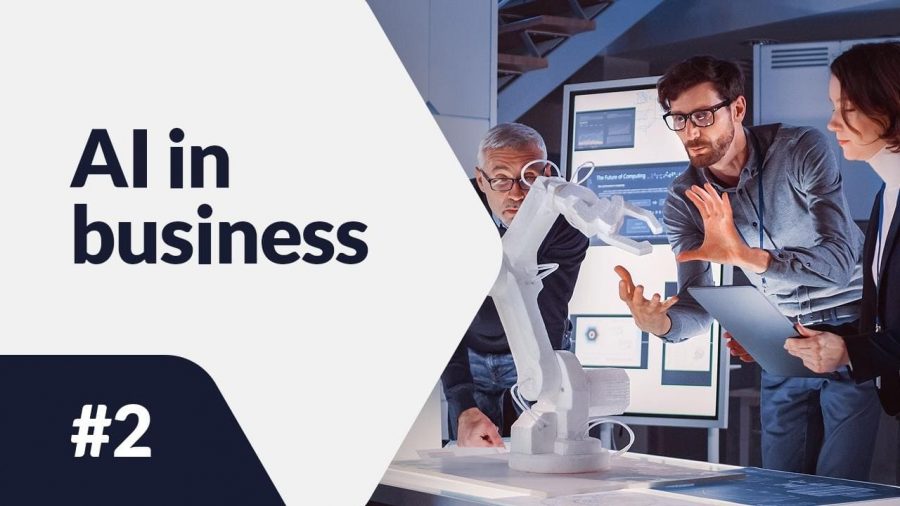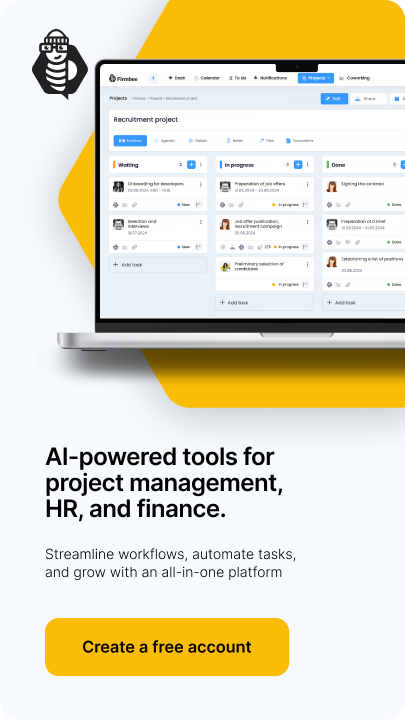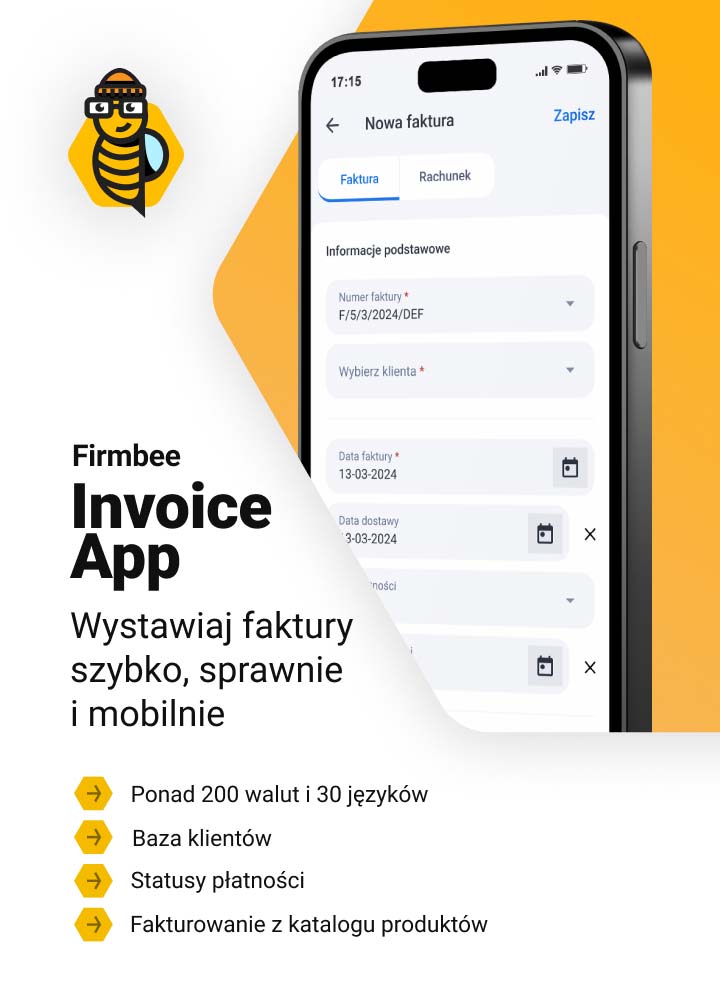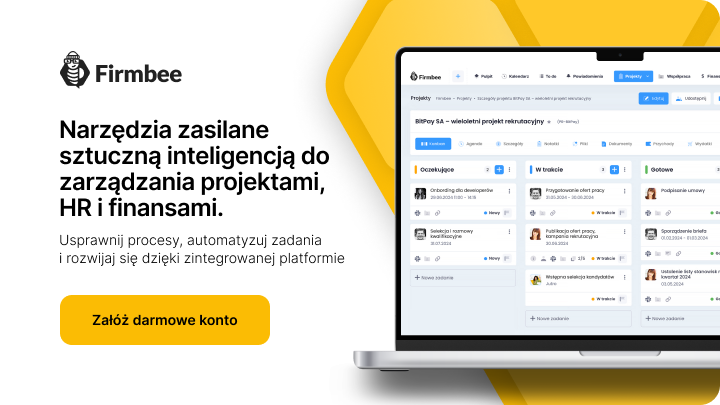Will artificial intelligence soon be able to read our thoughts? Will the existence and functioning of AI serve to meet human needs to its full potential? Or, increasingly out of our control, will AI seek to independently control the choices we make? The questions we just asked sound like the introduction to a sci-fi essay. However, they are quite real doubts and problems faced today by the developers and early users of the most advanced AI technologies.
Threats and opportunities of AI in business – table of contents:
- Threats and opportunities of AI in business
- Cybersecurity and cyber threats to artificial intelligence
- Safer with AI
- Safety Concerns
- Access to information and AI
- Widening Access
- Credibility issues
- Summary
The hopes and threats of AI in business
Applying artificial intelligence in business raises great hopes. That includes new markets and products, innovative services and ways of contact with customers. But it also generates fears concerning not only the security of sensitive data of the company and its contractors but even the further existence of entire business branches.
In today’s article, we’ll look at the threats and opportunities of AI in business. We will focus on the pros and cons of AI in the following areas:
- security
- access to information
In the following text, we will address the threats and opportunities of AI in business operations as they relate to the cost and present and future jobs.
Cybersecurity and cyber threats to artificial intelligence
The area of security in the digital world is one of the most sensitive topics being addressed concerning artificial intelligence. We entrust it to analyze, create, and even decide on increasingly crucial issues. Therefore, we must be aware not only of the opportunities for business development but also of the risks associated with the application of AI.
Safer with AI
Thanks to the use of AI, we can reach for improved security based on advanced user recognition technologies, popular for example in online banking security. Their essential components are systems:
- voice recognition, which is part of NLP, or Natural Language Processing
- image recognition (computer vision), especially face identification
The key sector of employing artificial intelligence to improve security concern analyzing the monitoring of events such as concerts or major sporting events. AI can therefore greatly facilitate the operation of companies involved in the protection of mass events. It will not only shorten the time of security control by comparing the presented document or ticket and the face of the person presenting it. Artificial intelligence enables detecting the presence and locating individuals who could potentially pose a threat, as well as those behaving contrary to security rules.
Another major opportunity related to the development of AI-based security is the monitoring of smart properties or smart homes. Without the help of AI, these would be vulnerable to attacks by hackers who, by breaking into the system, could enter the home unhindered. With AI, real-time monitoring is possible, detecting actions that could disable it in a much more sophisticated way than, say, antivirus software running on a computer.
An even more technologically advanced and very rapidly growing industry is artificial intelligence enabling unmanned stores. It usually combines advanced monitoring with the operation of mobile applications of logged-in users. Thanks to such solutions, it is possible to recognize a customer visiting a store and unnoticeably scan goods purchased and collect payment for services. They are also popular in other sectors, such as unmanned hotels.
Safety Concerns
However, these kinds of AI solutions involve certain risks and threats that companies have to consider. The most serious concern is leaks or theft of detailed identification data collected by the service provider.
There are also risks associated with the lack of brand-new AI laws and regulations. It may result in unpredictable consequences of the misuse of user data by companies storing it to uncontrolled surveillance by government authorities.
Moreover, there’s yet another profound concern involving the safety of AI in neurotechnology. In other words, the potential threat of building interfaces that enable direct brain-machine communication by reading brainwaves.
Access to information and AI
What raises the major worries about connecting the human brain to artificial intelligence also raises the greatest hopes about access to information and the speed of its processing.Solutions that can read brainwaves already allow for artificial speech synthesis or drone control. Thus, interfaces featuring the operation of machines or medical tools with thoughts are already at hand.
Widening Access
Ease in handling is a colossal convenience that lets any person seamlessly access information and education. One of the most accessible interfaces for the average user is voice search using naturally asking questions and similarly receiving answers. It makes it so that we don’t have to know specialized terms or advanced search engines to find the products or services we are looking for.
The next milestone in AI-assisted information access is image search. Few people realize how complex this task is. However, its use means tangible benefits for business, not least because it significantly reduces the role of location. With image search, you can search for similar goods using a photo, without the intermediary of a product description provided in a specific language.
Credibility issues
Unfortunately, there are also inevitably risks associated with the field of AI-assisted access to information. If artificial intelligence is to answer our questions accurately, we must be sure that it draws information from reliable sources. This is where the problem of AI learning techniques emerges.
We can divide it into three areas:
- collecting the data on which artificial intelligence is taught,
- data selection, i.e. the problem of verifying the veracity of information and rejecting, for example, fake news,
- applying the data, i.e., the conclusions drawn by AI from the set of data made available to it.
The reliability problem can be illustrated with a simple example. Imagine that an AI learned what cats look like from a set of pictures chosen incorrectly, in which all cats were black. By which it concluded that all cats are black.
Translating our problem into the realm of business, AI used to make investment decisions could learn from a set of mismatched financial data. For example, on one where the value of company A’s stock is rising all the time. So the AI defined it as a stock whose value is constantly growing, so such an investment has no risk.
Summary
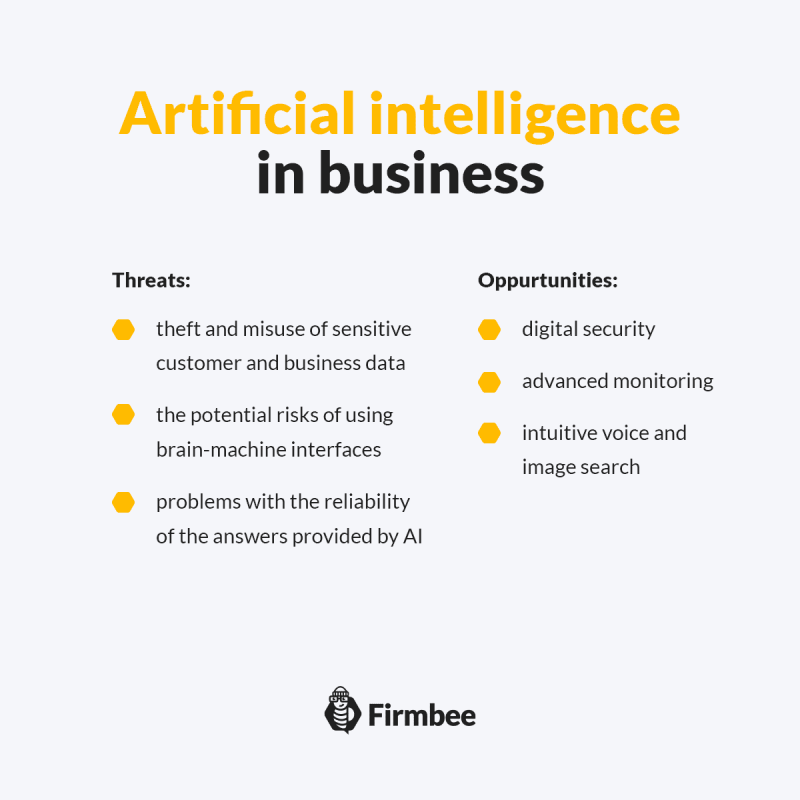
The opportunities of AI in business primarily include:
- digital security
- advanced monitoring that allows not only to prevent dangerous situations during mass events but also to operate unmanned stores
- quick access to information
- intuitive voice and image search
In contrast, the primary risks we discussed above take into account:
- theft and misuse of sensitive customer and business data
- the potential risks of using brain-machine interfaces
- problems with the reliability of the answers provided by AI
If you like our content, join our busy bees community on Facebook, Twitter, LinkedIn, Instagram, YouTube, Pinterest.
Author: Robert Whitney
JavaScript expert and instructor who coaches IT departments. His main goal is to up-level team productivity by teaching others how to effectively cooperate while coding.
AI in business:
- Threats and opportunities of AI in business (part 1)
- Threats and opportunities of AI in business (part 2)
- AI applications in business - overview
- AI-assisted text chatbots
- Business NLP today and tomorrow
- The role of AI in business decision-making
- Scheduling social media posts. How can AI help?
- Automated social media posts
- New services and products operating with AI
- What are the weaknesses of my business idea? A brainstorming session with ChatGPT
- Using ChatGPT in business
- Synthetic actors. Top 3 AI video generators
- 3 useful AI graphic design tools. Generative AI in business
- 3 awesome AI writers you must try out today
- Exploring the power of AI in music creation
- Navigating new business opportunities with ChatGPT-4
- AI tools for the manager
- 6 awesome ChatGTP plugins that will make your life easier
- 3 grafików AI. Generatywna sztuczna inteligencja dla biznesu
- What is the future of AI according to McKinsey Global Institute?
- Artificial intelligence in business - Introduction
- What is NLP, or natural language processing in business
- Automatic document processing
- Google Translate vs DeepL. 5 applications of machine translation for business
- The operation and business applications of voicebots
- Virtual assistant technology, or how to talk to AI?
- What is Business Intelligence?
- Will artificial intelligence replace business analysts?
- How can artificial intelligence help with BPM?
- AI and social media – what do they say about us?
- Artificial intelligence in content management
- Creative AI of today and tomorrow
- Multimodal AI and its applications in business
- New interactions. How is AI changing the way we operate devices?
- RPA and APIs in a digital company
- The future job market and upcoming professions
- AI in EdTech. 3 examples of companies that used the potential of artificial intelligence
- Artificial intelligence and the environment. 3 AI solutions to help you build a sustainable business
- AI content detectors. Are they worth it?
- ChatGPT vs Bard vs Bing. Which AI chatbot is leading the race?
- Is chatbot AI a competitor to Google search?
- Effective ChatGPT Prompts for HR and Recruitment
- Prompt engineering. What does a prompt engineer do?
- AI Mockup generator. Top 4 tools
- AI and what else? Top technology trends for business in 2024
- AI and business ethics. Why you should invest in ethical solutions
- Meta AI. What should you know about Facebook and Instagram's AI-supported features?
- AI regulation. What do you need to know as an entrepreneur?
- 5 new uses of AI in business
- AI products and projects - how are they different from others?
- AI-assisted process automation. Where to start?
- How do you match an AI solution to a business problem?
- AI as an expert on your team
- AI team vs. division of roles
- How to choose a career field in AI?
- Is it always worth it to add artificial intelligence to the product development process?
- AI in HR: How recruitment automation affects HR and team development
- 6 most interesting AI tools in 2023
- 6 biggest business mishaps caused by AI
- What is the company's AI maturity analysis?
- AI for B2B personalization
- ChatGPT use cases. 18 examples of how to improve your business with ChatGPT in 2024
- Microlearning. A quick way to get new skills
- The most interesting AI implementations in companies in 2024
- What do artificial intelligence specialists do?
- What challenges does the AI project bring?
- Top 8 AI tools for business in 2024
- AI in CRM. What does AI change in CRM tools?
- The UE AI Act. How does Europe regulate the use of artificial intelligence
- Sora. How will realistic videos from OpenAI change business?
- Top 7 AI website builders
- No-code tools and AI innovations
- How much does using AI increase the productivity of your team?
- How to use ChatGTP for market research?
- How to broaden the reach of your AI marketing campaign?
- "We are all developers". How can citizen developers help your company?
- AI in transportation and logistics
- What business pain points can AI fix?
- Artificial intelligence in the media
- AI in banking and finance. Stripe, Monzo, and Grab
- AI in the travel industry
- How AI is fostering the birth of new technologies
- The revolution of AI in social media
- AI in e-commerce. Overview of global leaders
- Top 4 AI image creation tools
- Top 5 AI tools for data analysis
- AI strategy in your company - how to build it?
- Best AI courses – 6 awesome recommendations
- Optimizing social media listening with AI tools
- IoT + AI, or how to reduce energy costs in a company
- AI in logistics. 5 best tools
- GPT Store – an overview of the most interesting GPTs for business
- LLM, GPT, RAG... What do AI acronyms mean?
- AI robots – the future or present of business?
- What is the cost of implementing AI in a company?
- How can AI help in a freelancer’s career?
- Automating work and increasing productivity. A guide to AI for freelancers
- AI for startups – best tools
- Building a website with AI
- OpenAI, Midjourney, Anthropic, Hugging Face. Who is who in the world of AI?
- Eleven Labs and what else? The most promising AI startups
- Synthetic data and its importance for the development of your business
- Top AI search engines. Where to look for AI tools?
- Video AI. The latest AI video generators
- AI for managers. How AI can make your job easier
- What’s new in Google Gemini? Everything you need to know
- AI in Poland. Companies, meetings, and conferences
- AI calendar. How to optimize your time in a company?
- AI and the future of work. How to prepare your business for change?
- AI voice cloning for business. How to create personalized voice messages with AI?
- Fact-checking and AI hallucinations
- AI in recruitment – developing recruitment materials step-by-step
- Midjourney v6. Innovations in AI image generation
- AI in SMEs. How can SMEs compete with giants using AI?
- How is AI changing influencer marketing?
- Is AI really a threat to developers? Devin and Microsoft AutoDev
- AI chatbots for e-commerce. Case studies
- Best AI chatbots for ecommerce. Platforms
- How to stay on top of what's going on in the AI world?
- Taming AI. How to take the first steps to apply AI in your business?
- Perplexity, Bing Copilot, or You.com? Comparing AI search engines
- ReALM. A groundbreaking language model from Apple?
- AI experts in Poland
- Google Genie — a generative AI model that creates fully interactive worlds from images
- Automation or augmentation? Two approaches to AI in a company
- LLMOps, or how to effectively manage language models in an organization
- AI video generation. New horizons in video content production for businesses
- Best AI transcription tools. How to transform long recordings into concise summaries?
- Sentiment analysis with AI. How does it help drive change in business?
- The role of AI in content moderation
